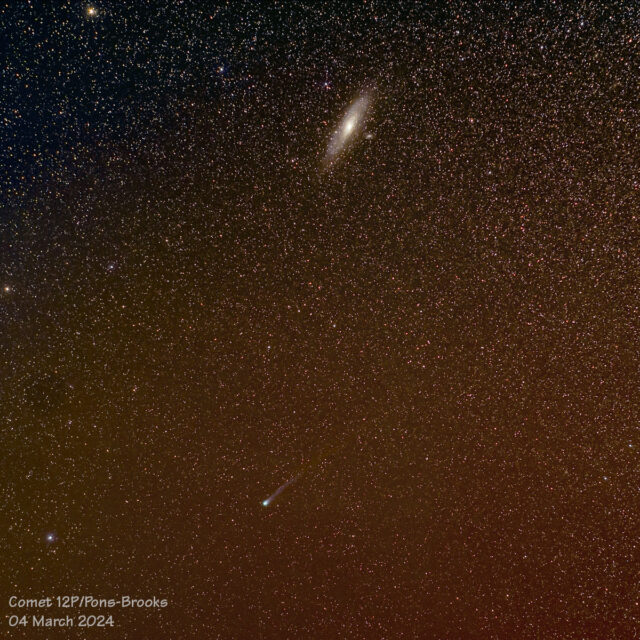Comet 12P/Pons-Brooks remains in the western sky–visible as twilight fades. But don’t wait too long in the evening or it gets too low in the western sky and becomes difficult to see. Also, it requires long exposure photographs or binoculars/telescope to see. There are projections that it may brighten to become just barely visible to the unaided eye in a few weeks.



I’ve had several opportunities recently to photography the comet including its positioning in the sky near the Andromeda Galaxy (M31). A normal to short telephoto lens (i.e, ~50 to 85mm) was a good choice for capturing both objects while a longer telephoto (i.e., 180mm or even 500mm) worked best for isolating the comet.

Of course, the comet is not the only object in the sky. Satellites are constantly moving across the sky. Fortunately, software can remove the tracks by stacking multiple photographs and taking the Median or the Mean value at each pixel. On the other hand, it can be useful to take the Max value at each pixel to illustrate the number of satellites crossing even a small portion of the sky in a short period of time.